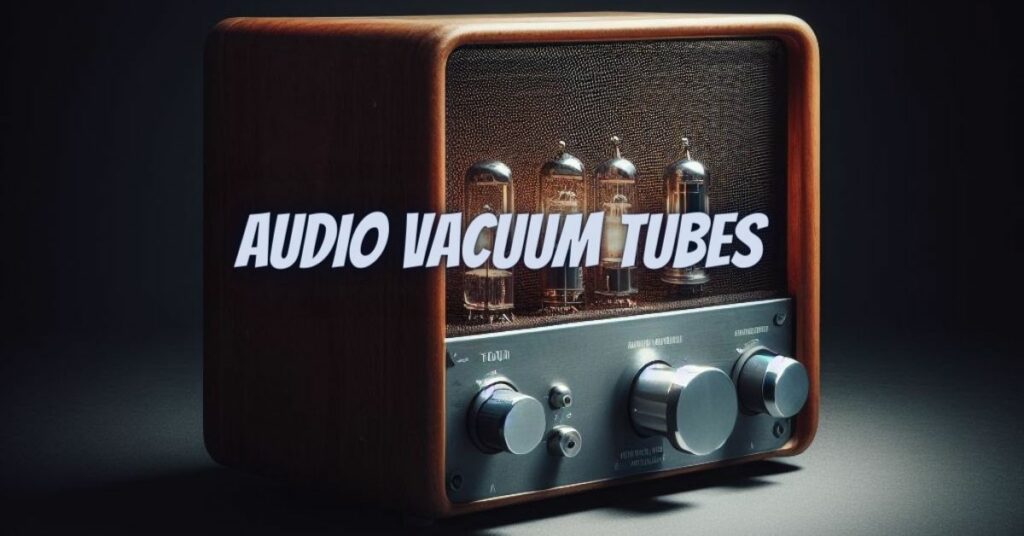In the age of digital technology, the charm of analog audio equipment remains undeniably alluring. Among the most captivating components of vintage audio gear are audio vacuum tubes, also known as electron tubes or thermionic valves. These glass-encased wonders have played a pivotal role in the history of audio reproduction, from early radios to high-end audiophile systems. In this article, we’ll explore the world of audio vacuum tubes, their fascinating history, how they work, and why they continue to captivate audiophiles and musicians alike.
The Birth of Audio Vacuum Tubes
Audio vacuum tubes made their debut in the late 19th century as a critical component in the early development of electronics. While many inventors and scientists contributed to their evolution, it was Thomas Edison, Lee de Forest, and John Ambrose Fleming who played instrumental roles in their development. Audio vacuum tubes became widely used in radios and amplifiers during the first half of the 20th century, shaping the way people experienced sound and music.
How Audio Vacuum Tubes Work
At their core, audio vacuum tubes are electronic devices that control the flow of electric current through a vacuum, which is devoid of air or any gas. This operation occurs within a glass envelope housing various elements, including a cathode, an anode (or plate), and a control grid.
The fundamental operation of audio vacuum tubes involves thermionic emission. Here’s how it works:
- Cathode: The cathode, typically heated to a high temperature, emits electrons due to thermionic emission. These emitted electrons form an electron cloud around the cathode.
- Anode (Plate): The anode, positively charged, attracts the emitted electrons, creating an electron flow from the cathode to the anode.
- Control Grid: Positioned between the cathode and anode, the control grid is an electrode with a negative charge. By varying this negative charge, the flow of electrons can be controlled, effectively modulating the current from the cathode to the anode.
The flow of electrons through the vacuum in a vacuum tube results in amplification, making it a crucial component in amplifiers, preamplifiers, and other audio devices.
Types of Audio Vacuum Tubes
There are several types of audio vacuum tubes, each with its unique characteristics and applications:
- Triode: The simplest type, with three elements (cathode, anode, and control grid), widely used in early radios and amplifiers.
- Tetrode: An improvement over the triode, featuring an additional electrode called the screen grid. This design enhanced the tube’s performance and reduced capacitance issues.
- Pentode: The pentode includes a suppressor grid in addition to the screen grid. This configuration offers better efficiency, reduced distortion, and improved high-frequency performance.
- Power Tubes: These are large vacuum tubes designed for high-power amplification in audio systems, commonly used in guitar amplifiers and high-end audio setups.
The Resurgence of Vacuum Tubes
In an era dominated by digital technology, the continued appeal of audio vacuum tubes may seem surprising, but their unique qualities have ensured their enduring relevance:
- Warm, Harmonic Sound: Vacuum tubes are celebrated for their ability to introduce a warm, harmonically rich distortion to audio signals, creating a pleasing, vintage sound.
- Audiophile Enthusiasm: Audiophiles and musicians appreciate the clarity, dynamic range, and musicality of vacuum tube amplification, especially in high-end audio systems and instrument amplifiers.
- Iconic Designs: Vintage audio equipment featuring vacuum tubes, such as tube amplifiers and receivers, is prized for its retro aesthetics and classic design.
- Niche Applications: Vacuum tubes continue to find niche applications in high-power audio amplification, guitar amplifiers, and radio transmission, where their unique qualities shine.
In conclusion, audio vacuum tubes are not just relics of a bygone era; they are essential components of the audiophile and musician’s toolkit. Their warm, harmonically rich sound, historic significance, and enduring appeal ensure that they remain a valued part of the audio world, with enthusiasts seeking out the unique sonic qualities they impart to music and sound.


